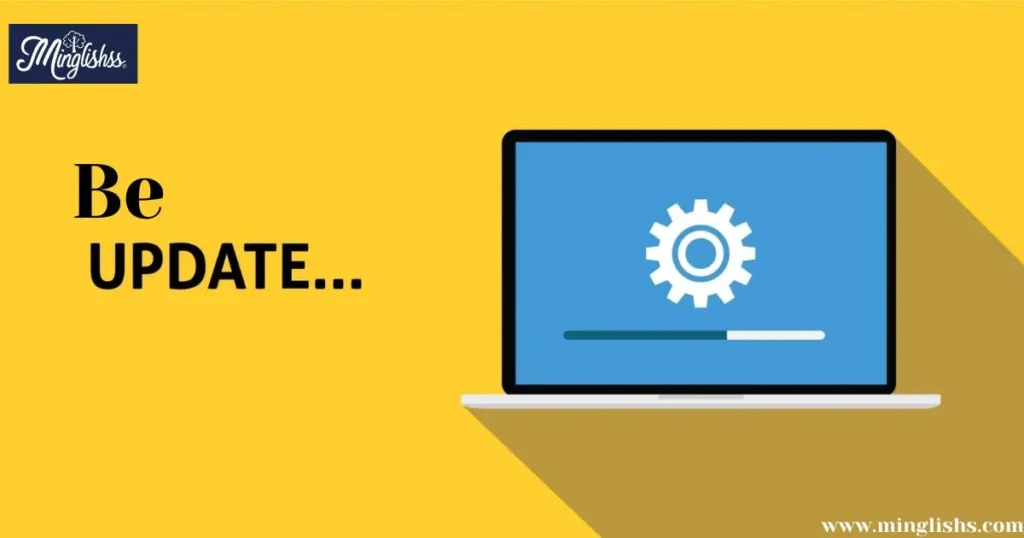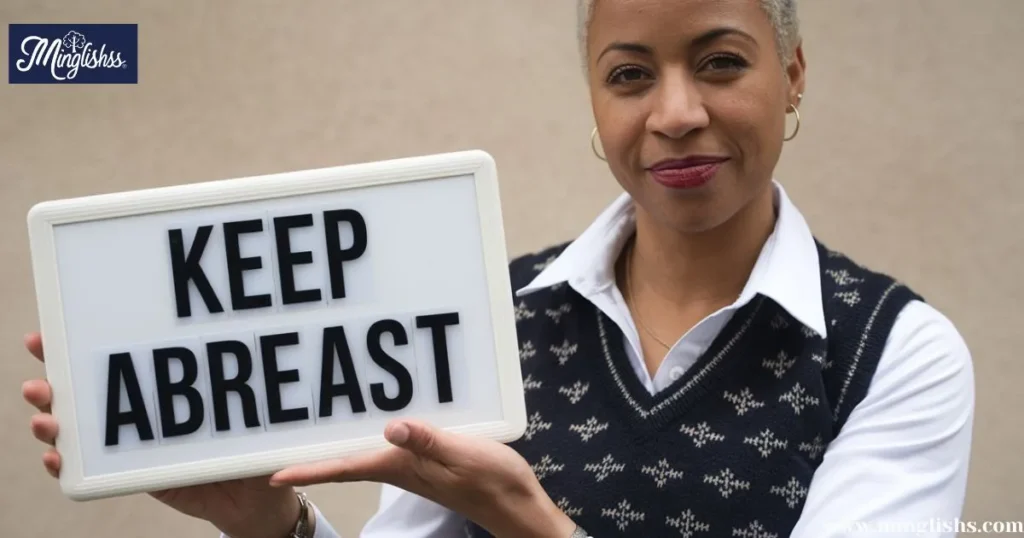“Finding alternative ways to express ‘stay up to date’ adds diversity and clarity to your communication.”
In today’s fast-paced world, staying informed and current is more important than ever. Whether you’re keeping up with industry trends, news, or simply staying in touch with your network, knowing how to say “stay up to date” in various ways can make your language more dynamic. Using different phrases adds depth and variety to your conversations, ensuring you never sound repetitive.
Looking to level up your communication skills? Imagine how effective you can be if you replace overused phrases like “stay up to date” with more engaging alternatives. By diversifying your language, you enhance your ability to convey messages with clarity and enthusiasm. The variety also keeps your audience engaged and interested in what you have to say.
This article explores 35 different ways to say “stay up to date,” giving you new options for various scenarios. Whether you’re writing emails, chatting with colleagues, or updating your followers, you’ll have a fresh set of phrases to use. Each alternative is explained with scenarios and additional tips so you can apply them easily and confidently.
Alternative Ways to Say “Stay Up to Date”
1. Keep Informed
Scenario: You’re sending a newsletter to your team about an upcoming project. Explanation: “Keep informed about the latest updates on our project timeline to ensure you’re aware of any changes.” This phrase implies that the recipient needs to pay attention to evolving information. Additional Tip: Use this when communicating in professional settings, especially where regular updates are necessary.
2. Remain Current
Scenario: A friend asks how you keep up with trends in technology. Explanation: “I make sure to remain current with tech news by following reputable websites and blogs.” This emphasizes continuous awareness. Additional Tip: Great for when you want to highlight a steady habit of following news or trends.
3. Stay Tuned

Scenario: You’re hosting a webinar and teasing future events. Explanation: “Stay tuned for more exciting webinars coming your way next month!” This phrase works well in casual or promotional contexts. Additional Tip: Ideal for building anticipation or excitement.
4. Be in the Loop
Scenario: You’re reassuring a colleague that you’ll keep them informed. Explanation: “Don’t worry, I’ll make sure you’re always in the loop about any important updates.” This suggests active participation in communication. Additional Tip: Use this in collaborative work environments to encourage inclusivity.
5. Monitor Closely
Scenario: You’re advising someone to track market changes. Explanation: “Make sure to monitor the stock market closely for any significant shifts.” This implies an ongoing and detailed observation. Additional Tip: Suitable for analytical situations where close attention to detail is required.
6. Follow Developments
Scenario: You’re discussing a breaking news story with a colleague. Explanation: “It’s important to follow developments in this story as new facts emerge.” This phrase implies keeping track of an evolving situation. Additional Tip: Best used for situations that involve ongoing change or new information over time.
7. Be Well-Versed
Scenario: You’re mentoring someone in your industry. Explanation: “To excel, you should be well-versed in both the basics and the latest advancements in our field.” This suggests deep understanding and continuous learning. Additional Tip: Ideal for professional advice or mentorship scenarios.
8. Keep Tabs On
Scenario: You’re encouraging a colleague to stay aware of competitor activity. Explanation: “We should keep tabs on our competitors’ marketing strategies to see what’s working for them.” This is a casual way of saying stay updated. Additional Tip: Use when you want to suggest close, but not obsessive, attention.
9. Follow Along
Scenario: You’re giving instructions on a new process. Explanation: “Follow along with the step-by-step guide to ensure you don’t miss any critical details.” This is straightforward and easy to understand. Additional Tip: Great for tutorials or instructional content where clarity is key.
10. Track Changes
Scenario: You’re managing a project with multiple revisions. Explanation: “Track the changes in the document to make sure we’re on the same page.” This is specific and clear for managing updates. Additional Tip: Perfect for project management scenarios involving frequent alterations.
11. Stay Informed
Scenario: You’re advising a colleague on how to remain aware of team decisions. Explanation: “Stay informed on the latest team meetings by reading the minutes every week.” This phrase implies regular, proactive updates. Additional Tip: Use for formal communication when requesting someone to keep track of ongoing information.
12. Be Aware of Updates
Scenario: You’re communicating with a client about system upgrades. Explanation: “Please be aware of updates happening next week that may affect your service.” This is more formal and to the point. Additional Tip: Best for notifying others about technical or scheduled changes.
13. Keep Yourself Posted
Scenario: You’re talking to a friend about your mutual interests. Explanation: “I’ll keep myself posted on the latest music releases from our favorite artists.” This has a casual, conversational tone. Additional Tip: Use this when speaking informally to friends or peers.
14. Stay in the Know
Scenario: You’re speaking at a conference about industry trends. Explanation: “To stay competitive, it’s essential to stay in the know about the latest market trends.” This phrase is commonly used in professional or educational contexts. Additional Tip: Great for conveying the importance of staying aware in dynamic industries.
15. Be Updated

Scenario: You’re talking to a colleague who missed a meeting. Explanation: “Don’t worry, I’ll help you be updated with everything that was discussed in the meeting.” This phrase works well in professional settings. Additional Tip: Use when someone needs to catch up after missing information.
16. Catch Up On
Scenario: You’re talking to a coworker who just got back from vacation. Explanation: “You’ll need to catch up on the emails from last week to be fully briefed on the latest developments.” This phrase emphasizes getting back on track after missing information.
Additional Tip: Ideal for situations where someone has been out of touch for a while and needs to get up to speed quickly.
Other Ways to Say “You Have the Wrong Number”
17. Stay Updated
Scenario: You’re sending out a reminder to your team about a project’s progress. Explanation: “Please stay updated with the project timeline to ensure everything runs smoothly.” This phrase is direct and implies continuous checking for new information. Additional Tip: Use when emphasizing the need for regular monitoring.
18. Keep Up With
Scenario: You’re discussing industry trends with a friend. Explanation: “I always keep up with the latest fashion trends by following popular designers and influencers.” This phrase works well for both casual and professional contexts. Additional Tip: Best for situations where trends or fast-moving industries are the focus.
19. Stay On Top Of
Scenario: You’re advising a junior colleague on how to handle tasks. Explanation: “To manage your workload effectively, make sure you stay on top of your deadlines and deliverables.” This phrase implies staying ahead and organized. Additional Tip: Great for time management and productivity discussions.
20. Follow the Latest
Scenario: You’re discussing new developments in technology. Explanation: “It’s crucial to follow the latest breakthroughs in AI technology if you want to stay competitive in the field.” This phrase is ideal for discussions about innovations and trends.
Additional Tip: Use this in professional or academic discussions where expertise matters.
21. Be On the Cutting Edge
Scenario: You’re motivating your team to innovate. Explanation: “Our goal is to be on the cutting edge of this industry, so we need to keep up with all the latest advancements.” This phrase highlights being among the first to adopt new ideas or technologies. Additional Tip: Perfect for competitive environments or industries that prioritize innovation.
22. Be Up to Speed
Scenario: You’re welcoming a new team member. Explanation: “I’ll help you get up to speed with all the projects we’re currently working on.” This phrase is used to catch someone up quickly on key information. Additional Tip: Ideal for onboarding or bringing someone into a new role.
23. Keep Yourself Informed
Scenario: You’re giving advice to someone on how to maintain knowledge in their field. Explanation: “It’s important to keep yourself informed about the changes in our industry to stay ahead.” This emphasizes personal responsibility in staying updated. Additional Tip: Use in educational or professional mentoring to encourage self-driven learning.
24. Check for Updates
Scenario: You’re giving instructions on maintaining software. Explanation: “Always check for updates to ensure your software runs smoothly and securely.” This is direct and specific, often used in technical or product-related contexts. Additional Tip: Best for technical support or advising someone to ensure their tools or systems are current.
25. Keep Abreast Of

Scenario: You’re advising someone on keeping track of market trends. Explanation: “To succeed in investing, you need to keep abreast of changes in market conditions.” This is a formal way of saying stay updated and often used in financial or professional settings. Additional Tip: Perfect for serious or formal discussions where professionalism is key.
26. Be Up on the Latest
Scenario: You’re discussing pop culture with a friend. Explanation: “I always try to be up on the latest movies and shows so I can join in on the conversations.” This is casual and great for keeping up with trends. Additional Tip: Use for light-hearted conversations about entertainment or culture.
27. Stay in Touch with Changes
Scenario: You’re advising someone on the changing dynamics in their field. Explanation: “To remain competitive, you need to stay in touch with changes in consumer behavior and market trends.” This emphasizes adaptability and awareness. Additional Tip: Suitable for industries undergoing frequent change, such as marketing or technology.
28. Remain Knowledgeable
Scenario: You’re advising a team member on how to remain competent in their role. Explanation: “To remain knowledgeable in your position, attend workshops and read up on industry updates regularly.” This suggests continuous learning. Additional Tip: Use in formal advice settings, especially when discussing professional development.
29. Stay Engaged
Scenario: You’re encouraging someone to remain active in their learning. Explanation: “Stay engaged with current events by reading a variety of news sources daily.” This implies active participation and interest in staying updated. Additional Tip: Perfect for discussions on personal development and active learning habits.
30. Be in Sync
Scenario: You’re discussing project management with a colleague. Explanation: “We need to be in sync with the latest updates from our clients to ensure we meet their needs.” This emphasizes alignment and coordination. Additional Tip: Great for collaborative environments where staying updated involves teamwork.
31. Stay in the Loop on News
Scenario: You’re recommending a podcast to a friend who loves current affairs. Explanation: “This podcast helps me stay in the loop on news, covering everything from politics to entertainment.” This phrase is casual and suitable for general updates. Additional Tip: Use this when suggesting resources for staying informed, such as newsletters or media outlets.
32. Keep Up to Date
Scenario: You’re managing a group project and want everyone aligned. Explanation: “It’s crucial that everyone keeps up to date with our deadlines and deliverables to ensure the project’s success.” This phrase emphasizes the importance of real-time awareness.
Additional Tip: Use when talking about deadlines, progress tracking, or project management.
33. Stay Alert to Changes

Scenario: You’re advising a colleague on adapting to new regulations. Explanation: “Make sure you stay alert to changes in the policy to avoid any non-compliance issues.” This phrase highlights the need for vigilance. Additional Tip: Perfect for regulatory environments where updates can have a significant impact.
34. Be Up-to-the-Minute
Scenario: You’re discussing technology trends with a friend. Explanation: “I try to be up-to-the-minute with the latest tech releases by following top industry blogs.” This suggests being extremely current. Additional Tip: Use when discussing fast-moving fields or when you want to emphasize the need for cutting-edge information.
35. Be Aware of New Developments
Scenario: You’re updating a colleague on company policies. Explanation: “Please be aware of new developments in the company’s policies to ensure you’re following the latest guidelines.” This phrase is formal and suited to organizational updates. Additional Tip: Ideal for internal communications in workplaces, especially for policy or structural changes.
Pros and Cons of Using Alternative Phrases
Pros:
- Improves Communication: Using varied phrases keeps conversations fresh and prevents monotony.
- Tailored Messaging: You can choose specific phrases based on the audience or situation.
- Enhances Professionalism: Different phrases can help convey formality or casualness, depending on the context.
- Increased Engagement: People are more likely to pay attention when language is diverse and dynamic.
- Boosts Clarity: Specific alternatives can make your communication more precise and impactful.
Cons:
- Potential Confusion: Using too many different phrases can sometimes confuse the reader if not used properly.
- Overcomplicating Simple Messages: In some cases, simplicity is better, and using varied phrases may make the message harder to follow.
- Unfamiliar Terms: Some alternatives may not be as widely understood by all audiences, leading to misunderstandings.
- Overuse of Formality: In casual settings, overly formal phrases might make the communication feel stiff or unnatural.
- Cultural Differences: Certain phrases might not translate well across different cultural or linguistic contexts.
Conclusion
Incorporating different ways to say “stay up to date” in your conversations, emails, and professional exchanges can significantly improve the quality of your communication. By choosing the right phrase for the right situation, you convey your message more effectively and keep your audience engaged. Whether you’re “keeping informed” or “staying in the loop,” knowing a variety of alternatives helps you adapt to different contexts, ensuring that your language is both dynamic and professional.
By staying aware of how you communicate, you not only enhance clarity but also enrich your conversations. Remember, effective communication is about choosing the right words that resonate with your audience. So next time you want to say “stay up to date,” consider your options, and watch how your communication style evolves!
Answer to key questions
What are other ways to say “stay up to date”?
You can say “keep informed,” “stay current,” “be in the loop,” “remain knowledgeable,” or “keep abreast of.”
Why is it important to use alternative phrases for “stay up to date”?
Using different phrases helps avoid repetition, improves clarity, and tailors communication to specific contexts, making it more engaging.
Which phrase is best for formal communication?
“Keep abreast of” and “remain knowledgeable” are ideal for formal or professional settings.
Can these phrases be used in casual conversations?
Yes, phrases like “stay in the loop” or “catch up on” are great for casual or informal conversations.
How do these alternatives enhance communication?
They add variety, prevent monotony, and allow for better expression depending on the context and audience.

Hi, I’m Isabel: I’m passionate about turning language learning into a fun adventure. I believe in making every word exciting and memorable.










